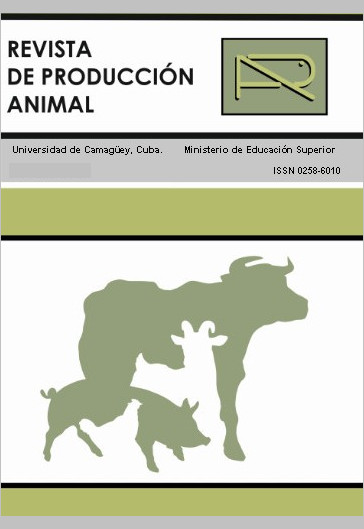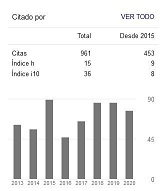Domesticated Animals as Reservoirs of Leptospirosis in Camaguey, the Pig Factor
Resumen
The aim of this study was to evaluate the role of domesticated animals, particularly pigs, as reservoirs of leptospirosis in the province of Camaguey. The sera from 2 617 equines, 1 820 pigs, 75 ovines and caprine, and 69 canines in Camaguey were analyzed by microagglutination. Serovars Icterohaemorrhagiae, Canicola, Ballum, Australis, Pomona and Tarassovi were used as antigens for horses, pigs and dogs; whereas Icterohaemorrhagiae, Canicola, Ballum, Pomona, Hebdomadis and Sejroe were used for bovines and ovine-caprine. The variable studied was antibody proportion per species. The inclusion of Hardjo, Bratislava, Sejroe and Grippotyphosa for serum screenings in swine contributed to better understanding of the species as reservoir of Leptospirosis in the province. Due to the growing number of these animals in urban adjacent areas, this result is a warning about the underlying risk of epidemics transmitted to humans.
Descargas
Citas
DIVERS, T. J. (2015). Leptospirosis in Swine. The The Merck Veterinary Manual. Retrieved on January 2, 2017, from http://www.merckvetmanual.com/mvm/generalizedconditions/leptospirosis/leptospirosis_in_ swine.html.
LUNN, K. (2015). Overview of Leptospirosis. The Merck Veterinary Manual. Retrieved on January 2, 2017, fromhttp://www.merckvetmanual.com/mvm/generalizedconditions/leptospirosis/overviewof_leptospirosis.html.
MORALES, R.; REBATTA, M.; LUCAS, J.; MATEO, J. y RAMOS, D. (2014). Caracterización de la crianza no tecnificada de cerdos en el parque porcino del distrito de Villa el Salvador, Lima-Perú. Salud Tecnol. Vet., 2, 39-48.
OMS (2003). Leptospirosis humana: guía para el diagnóstico, vigilancia y control. Ginebra: Organización Mundial de la Salud. Retrieved on January 2, 2017, fromhttp://new.paho.org/hq/index.php?option=com_docman&task=doc_download&gid=19119&Itemid=2518&lang=en.
OMS (2008). Leptospirosis humana: guía para el diagnóstico, vigilancia y control. Ginebra: Organización Mundial de la Salud. Retrieved on January 2, 2017, fromwww.med.monash.edu.au/microbiology/staff/adler/guia-esp.pdf.
PUENTES, T.; ENCINOSA, A.; PÉREZ, G. y URQUIAGA, R. (2009). Programa para la Prevención y Control de la Leptospirosis en Cuba. Ciudad de La Habana, Cuba: Instituto de Medicina Veterinaria.
RIVERO, S. M. y RAGO, M. (2011). Leptospirosis: revisión del tema a propósito de dos casos. BIOMEDICINA, 6 (2), 38-49.
SUÁREZCONEJEROA. M.;OTEROMORALES, J. M.; CRUILLASMIRANDA, S. y OTEROSUÁREZ, M. (2015). Prevención de leptospirosis humana en la comunidad. Artículo de revisión. Rev Cubana Med Mil.,44 (1),86-95.Retrieved on January 12, 2017, fromhttp://scielo.sld.cu/scielo.php?script=sciarttext&pid =S0138-65572015000100010&lng=es&nrm=iso.
WASIŃSKI, B. y DUTKIEWICZ, J. (2013). Leptospirosis-current risk factors connected with human activity and the environment. Review article. Annals of Agricultural and Environmental Medicine, 20 (2), 239-244.
Los autores de los artículos publicados en RPA retienen los derechos de autor de su trabajo, de marca y patente, y también sobre cualquier proceso o procedimiento descrito en el artículo, así como a compartir, copiar, distribuir, ejecutar y comunicar públicamente el artículo publicado en la RPA o cualquier parte de aquel siempre que indiquen la fuente de publicación (autores del trabajo, revista, volumen, número y fecha), pero están de acuerdo en que la revista publique los trabajos bajo una licencia Creative Commons.
![]() Licencia Attribution-NonCommercial 4.0 International (CC BY-NC 4.0)
Licencia Attribution-NonCommercial 4.0 International (CC BY-NC 4.0)






































